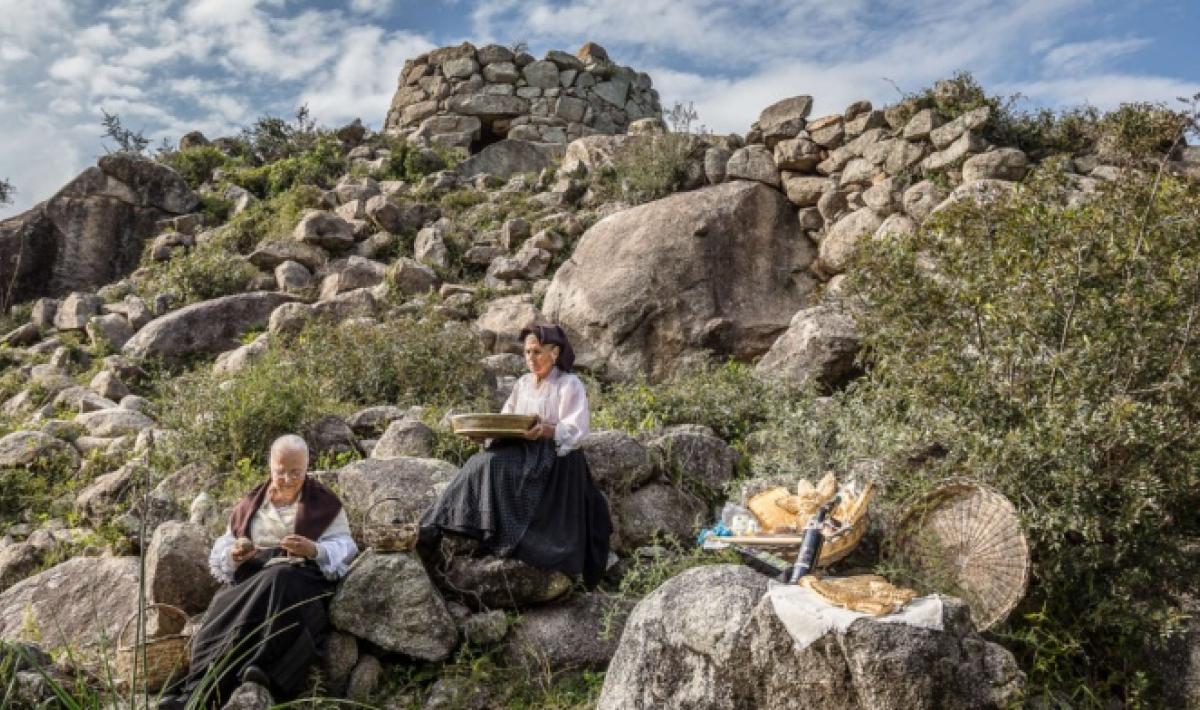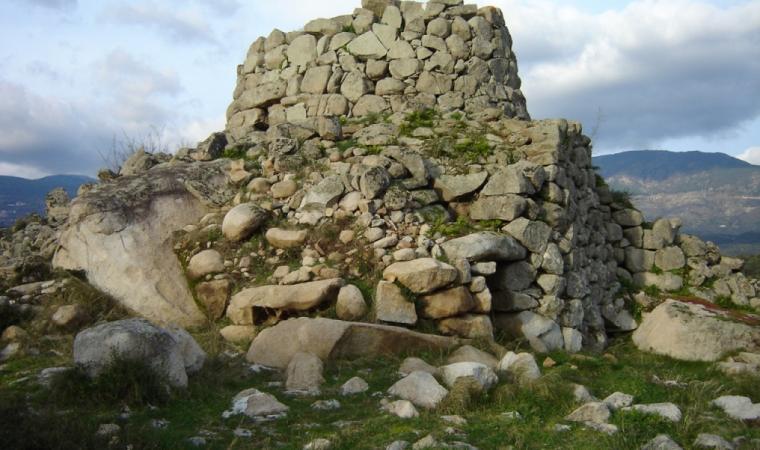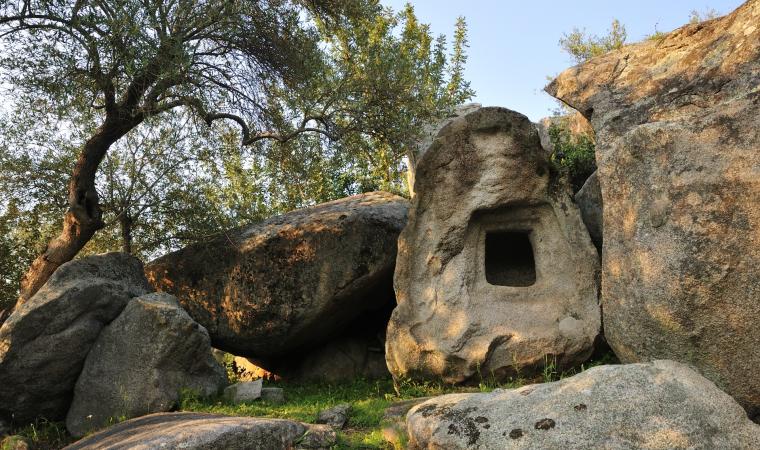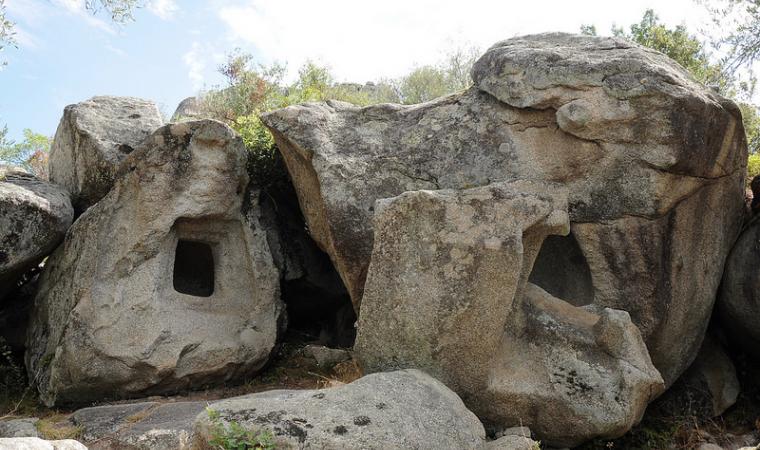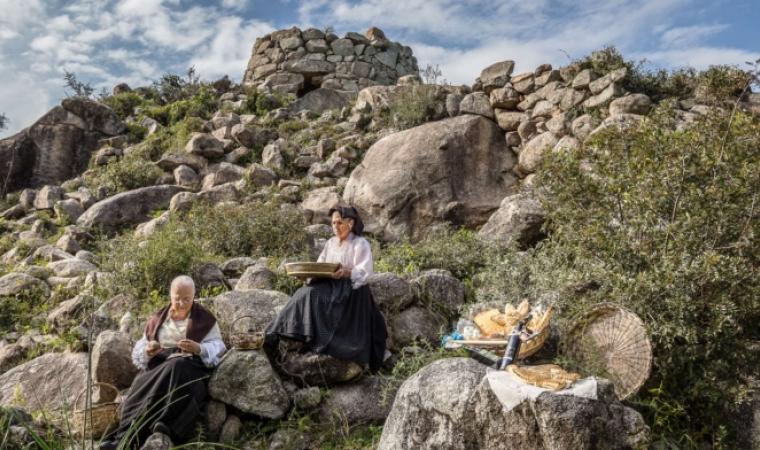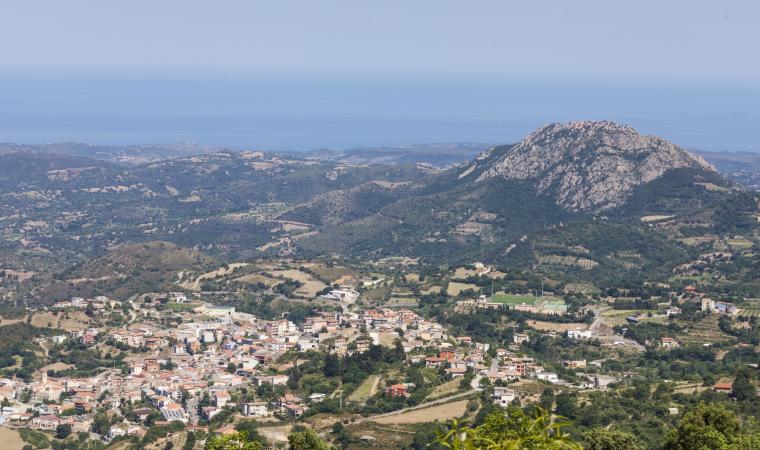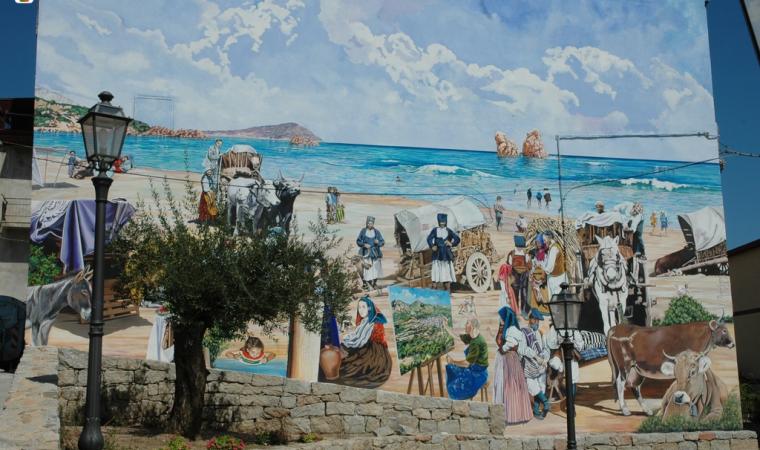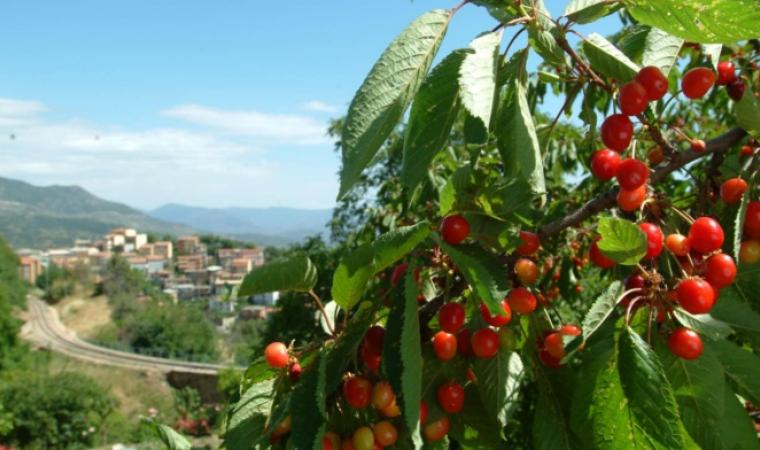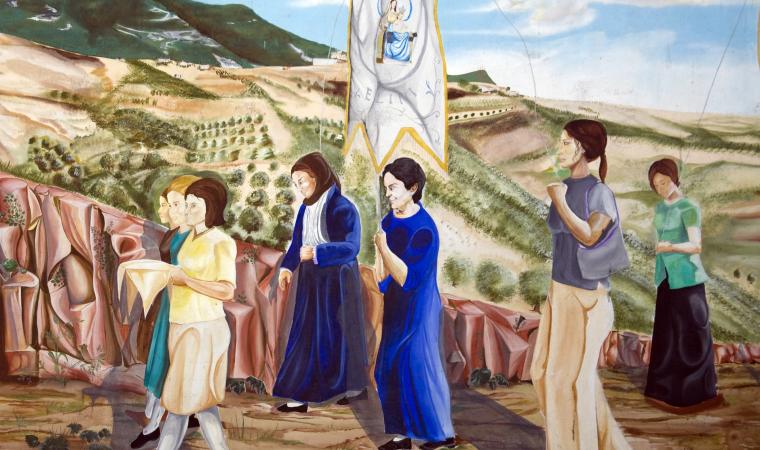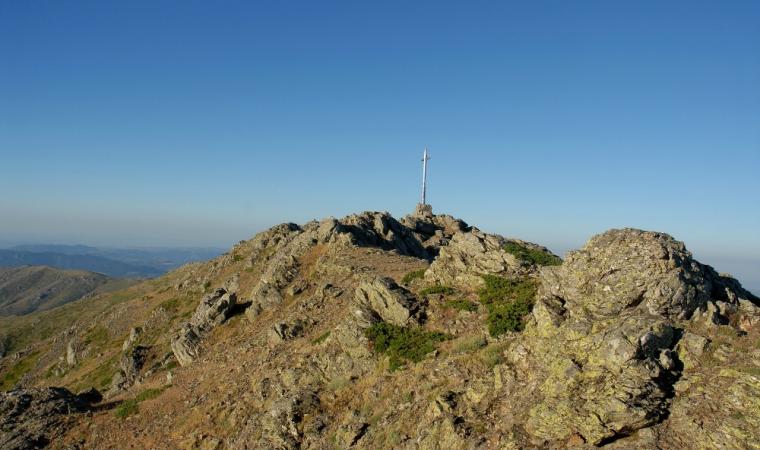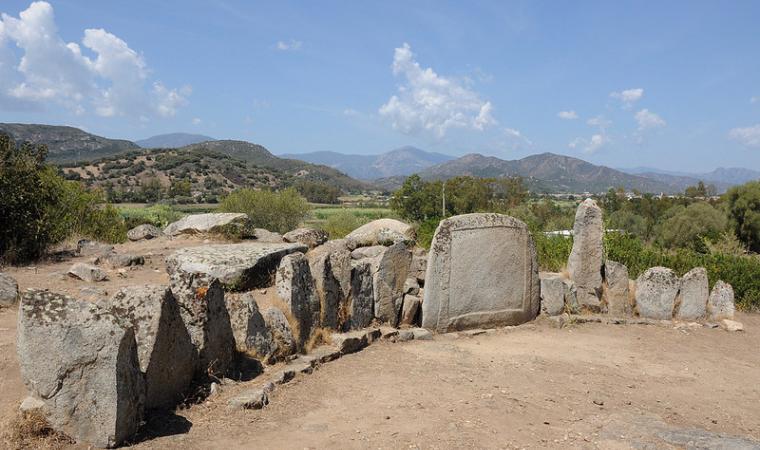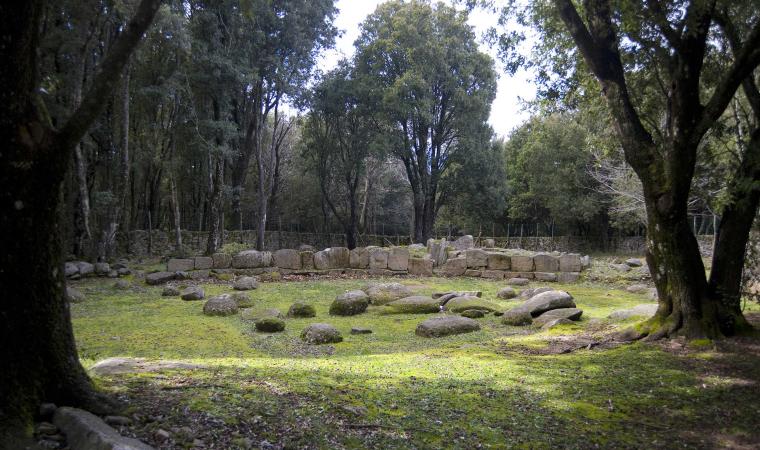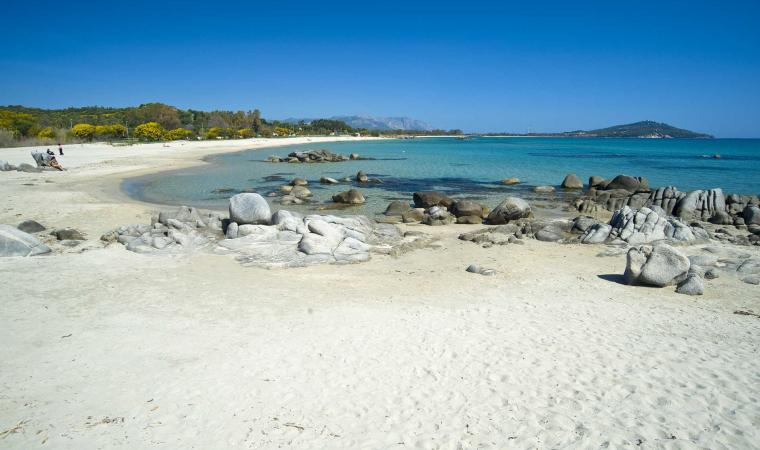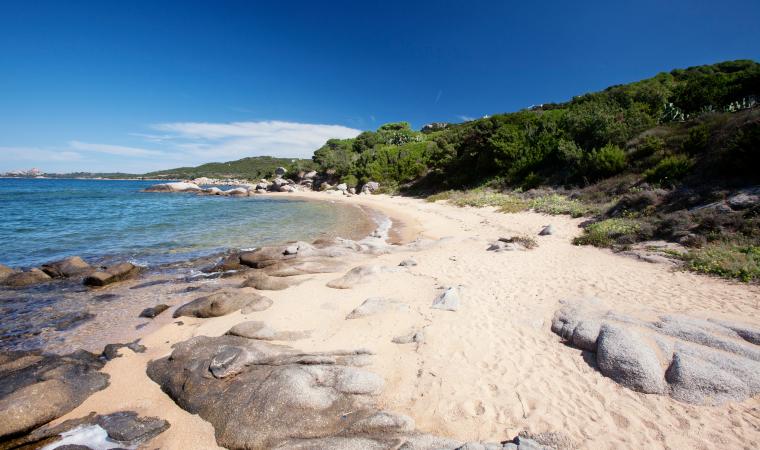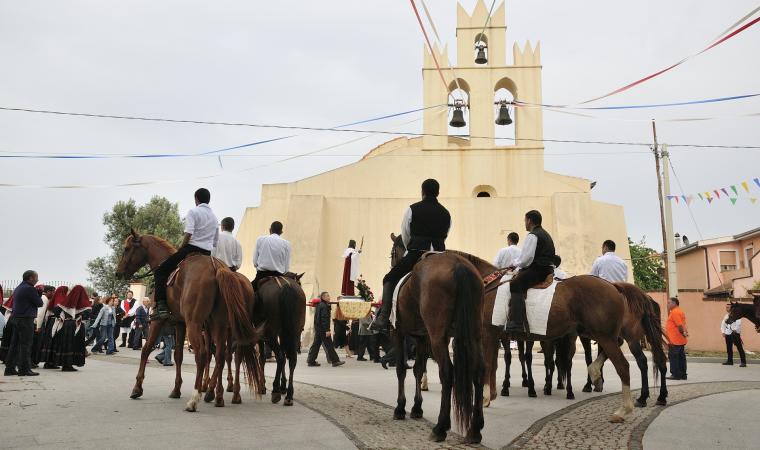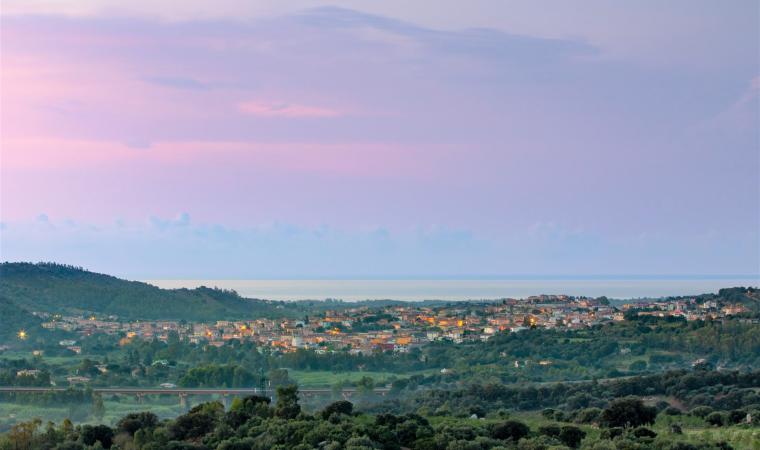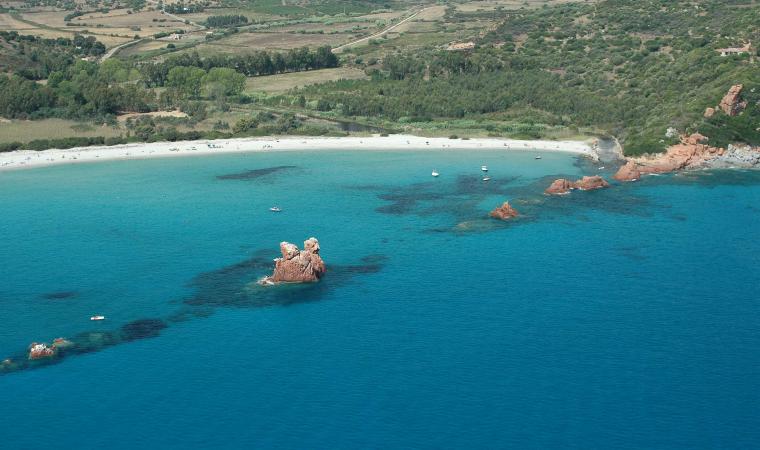It is one of the most interesting examples of the talent of Nuragic Age architects to exploit natural elements for the construction of their buildings. The Scerì complex sits in a strategic position perched on the top of a granite tower, partially surrounded by a river, in the Ilbono area. Once inside this archaeological park, you’ll find a nuraghe, a village and two domus de Janas (in Sardinian, a House of the Fairies).
The largest building is a nuraghe, a complex version with an added wing, all built out of medium-sized squared granite blocks. The remains of the main tower, of which just under five metres still stands, is circular. The entrance features a well-hewn architrave and leads to a rectangular antechamber that once led to an inner room. Another architrave entrance, this one trapezoidal, is found at the northern end and leads to a curved corridor, at the end of which is the adjacent building. You will note two niches along the corridor, one on either side, and on the right, you’ll see another opening that leads to a second corridor which is, however, blocked with rubble. Under the tower you’ll find several natural cavities integrated with stretches of wall. At a lower level there was a counter wall with an entrance on the eastern side, it too integrated with rocky outcrops in several places.
Adjacent to the nuraghe was a large village of huts, used both for living and working, where materials were found that allowed the site’s Nuragic phase to be dated to between the Middle and Recent Bronze Ages (15th to 12th centuries BCE). West of the complex you’ll come across two domus de Janas, both single-celled, carved into two large boulders during the Middle Neolithic (4th millennium BCE). The first one has an entrance preceded by a small pavilion. It features a small, oval room. The second was damaged when the front of the boulder near the entrance collapsed, but you can still admire the precision of the sanding on the walls and floor.
The area of Ilbono is home to numerous historical landmarks: at least a dozen nuraghe, most with a single tower, and a variety of Giants’ tombs. Less than nine kilometres separate the town from another famous Nuragic complex in the Lanusei area. Nestled in a fairy-tale landscape on a meadow at an altitude of 1,000 metres, lies the Seleni Woods Archaeological Park. Surrounded by oak, chestnut and poplar trees you will visit a nuraghe, a village of some 200 huts, two Giants’ tombs and two sacred springs.

